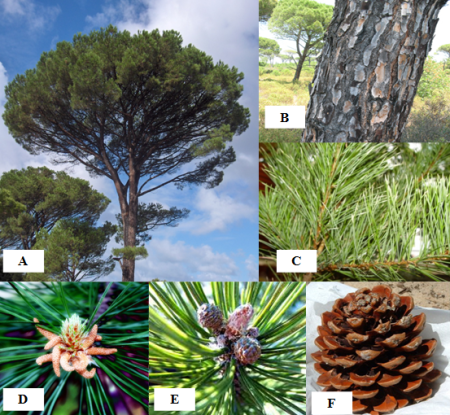
Objective:
The aim of this work was to evaluate the outcome of PPT content between ultrasound-assisted extraction and the conventional maceration extraction techniques.
Context:
The pinion pine is part of the pinea section that includes only the species Pinus pinea, this is due to a certain character, its short-wing hard seed, the transverse tracheal thin-walled and without ornamentation. Pine nut oil is very rich in polyunsaturated fatty acids, which make it a health, nutritive and energetic oil. Rich in phosphorus, vitamin B1 and iron, it is an essential contribution in the intellectual effort. It has a beneficial effect on the respiratory system: cough, chronic bronchitis, asthma and ulcers. In addition, pine needles are known to have also interesting molecules but they are not valorized.
Contacts:
Ibtissem Taghouti
ibtissem.taghouti@gmail.com
Authors : Mahouachi Wifek; Amri Ismail, Mohsen Hanana, Hamrouni Lamia
E-mail : wifekmahouachi@gmail.com
Further information:
Nuno Ratolaa, Sílvia Lacorte b, Damià Barceló b, Arminda Alves , 2009, Microwave-assisted extraction and ultrasonic extraction to determine polycyclic aromatic hydrocarbons in needles and bark of Pinus pinaster Ait. and Pinus pinea L. by GC–MS.
Nuno Ratola, Vera Homem b, José Avelino Silva, Rita Araújo , José Manuel Amigo, Lúcia Santos, Arminda Alves, 2014, Biomonitoring of pesticides by pine needles — Chemical scoring, risk of exposure, levels and trends.
Tamás Hofmann*, Eszter Visi-Rajczi, Levente Albert, 1 novembre 2019, Antioxidant properties assessment of the cones of conifers through the combined evaluation of multiple antioxidant assays.
Tansel Kemerli-Kalbaran, Murat Ozdemir,26 December 2018, Multi-response optimization of oil extraction from pine nut (Pinus pinea L.) by response surface methodology: Extraction efficiency, physicochemical properties and antioxidant activity